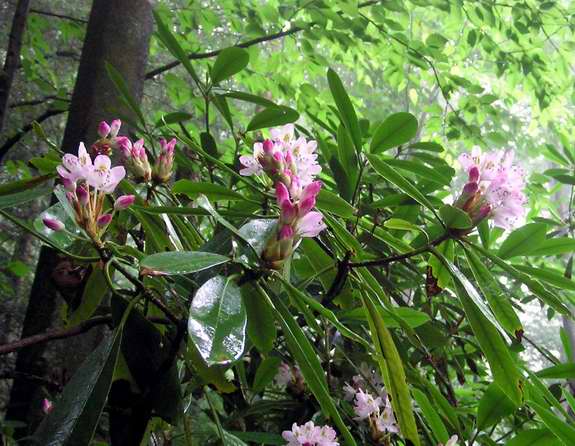|
Common Name: Great Rhododendron, Rosebay, Great Laurel, Deer tongue Scientific Name: Rhododendron maximum (from the Greek Rhodos meaning rose and dendron meaning tree, so the Rhododendron is literally "rose tree.") Potpourri: The Great Rhododendron forms a virtually impenetrable subcanopy thicket with various pejorative colloquial names such as "laurel hell." Studies have shown that the Rhododendron reduces the survival rate of Quercus rubra, red oak by 40 percent and Acer rubrum, red maple, by 95 percent. There is some scientific debate as to why this occurs. The predominant theory is that light is reduced by 80 percent and water by 20 percent due to the Rhododendron's density. Over 3 million acres in the southern Appalachians are dominated by this species alone. Rhododendron is reputedly poisonous, particularly when the nectar of the flowers is made into honey by bees. According to legend, in about 380 BCE Xenophon led a Greek army through the territory of Colchis on the Black Sea in the present day nation of Georgia. The soldiers collected and ate the honey from beehives and thousands became ill for several days. In the Mediterranean, honey made from Rhododendron is called mad honey. John Muir noted in 1869 that sheep became sick after eating the plant. However, Rhododendron has also been used as a medicinal. A poultice of leaves was employed by Native Americans and later colonists as a treatment for arthritic pain and headaches. A decoction was prepared for ingestion as a treatment for heart ailments and rheumatism. Rhododendron wood is heavy, strong, and dense (39 pounds per cubic foot). It was used by Native Americans to make pipes and eating utensils and by early settlers to make tool handles and engraving blocks. |
